From founders' surnames to initials, acronyms and reassuring-sounding words, brand names have always oscillated between the abstract and the familiar. And with good reason!
A surname as a brand name
A long, long time ago, when starting a business, it was simply given the founder's surname: Citroën (1919), Chanel (1910), Lindt (1845), or Michelin (1889). Sometimes, a daughter's name was used, as in Mercedes (1902), or a son's nickname, because it sounded nice. When forming a partnership, an ampersand was simply placed between the two names, as in Moët & Chandon (1743): father-in-law and son-in-law, simple as that.
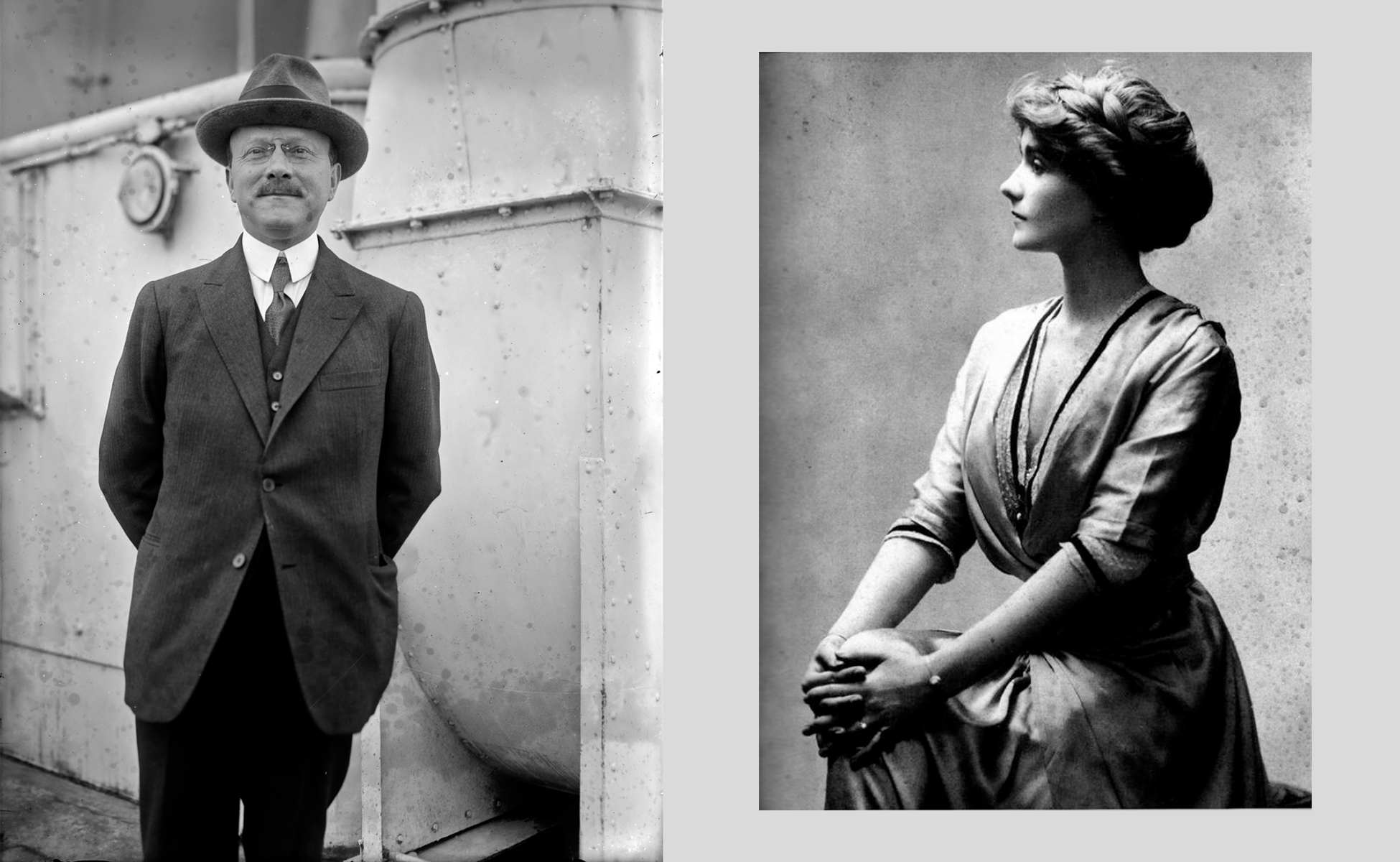 André Citroën and Gabrielle Chanel
André Citroën and Gabrielle Chanel
You are probably familiar with Hennes & Mauritz (1968) by its initials H&M: here, Hennes means "for her" in Swedish. The founder of the Hennes brand (1947) is Persson, but Mauritz is indeed the name of the founder of the hunting store that Persson subsequently bought, before merging the two initials.
If creating a service, or inventing something, the name explained what it was about: the Société Lyonnaise des eaux (1880), the Société du Papier Linge (1946), the Moulin-légumes (1932), or the Société des transports en commun de la région parisienne (1921). It was simple, but sometimes long. And when you were named
Rothschild with two h's, you also knew that your clients wouldn't look you up in the directory but would be recommended to you directly by word of mouth, so
spelling wasn't really an issue...
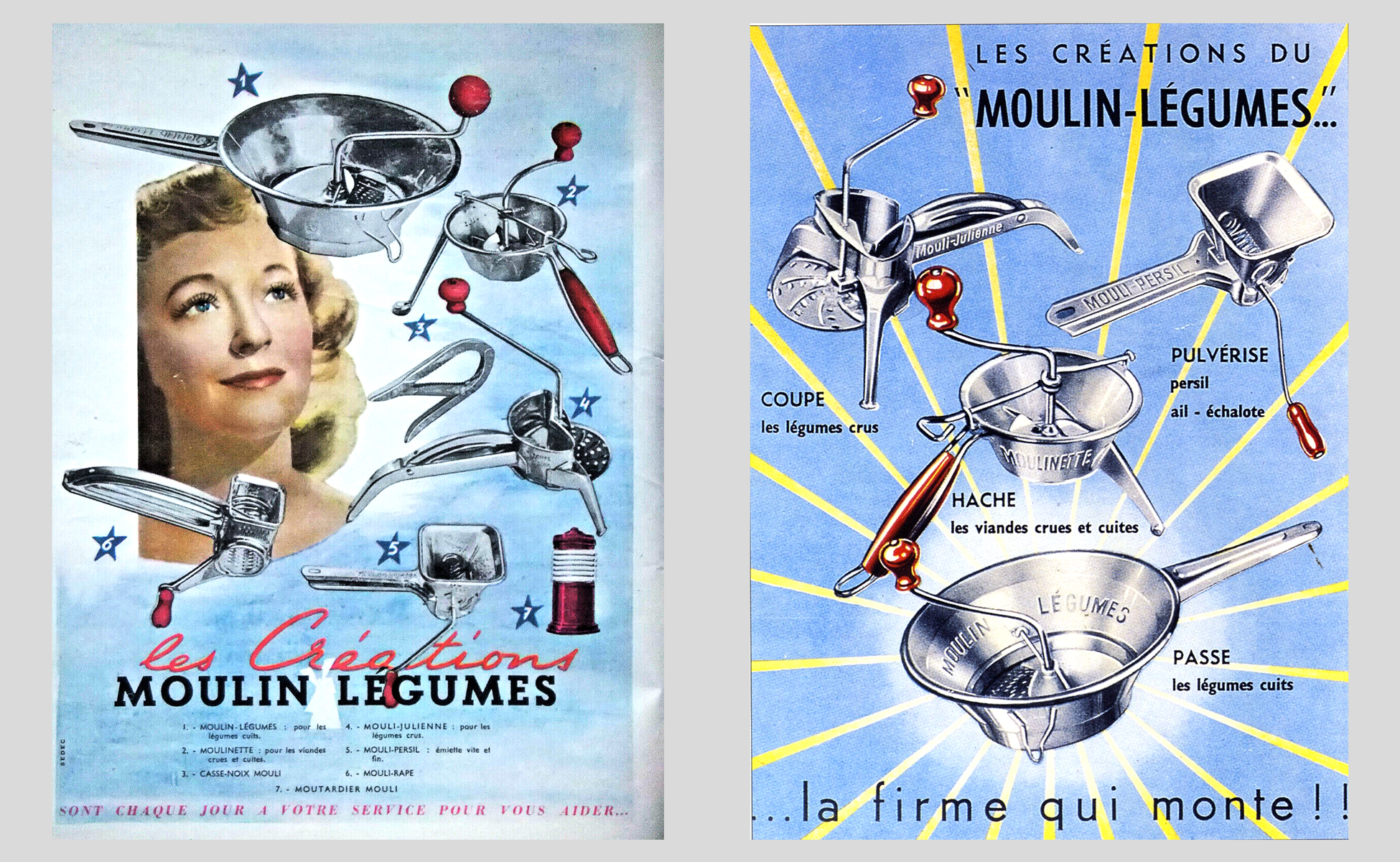
Ingredients or a number also work
When naming a new product, it was often given a name related to its region of origin, shape, ingredients, or use.
Toblerone is named after its inventor, Jean Tobler. In the United States, legislation at the end of the 19th century required that the list of ingredients be included in product names.
Coca-Cola, inspired by the blend of French wines Mariani (made of wine and coca leaf), was initially called Pemberton’s French Wine Coca and then took on its well-known name, for the cocaine (derived from the coca leaf) and cola nut (containing caffeine) that were its basic ingredients! The cocaine and alcohol were later removed during Prohibition.
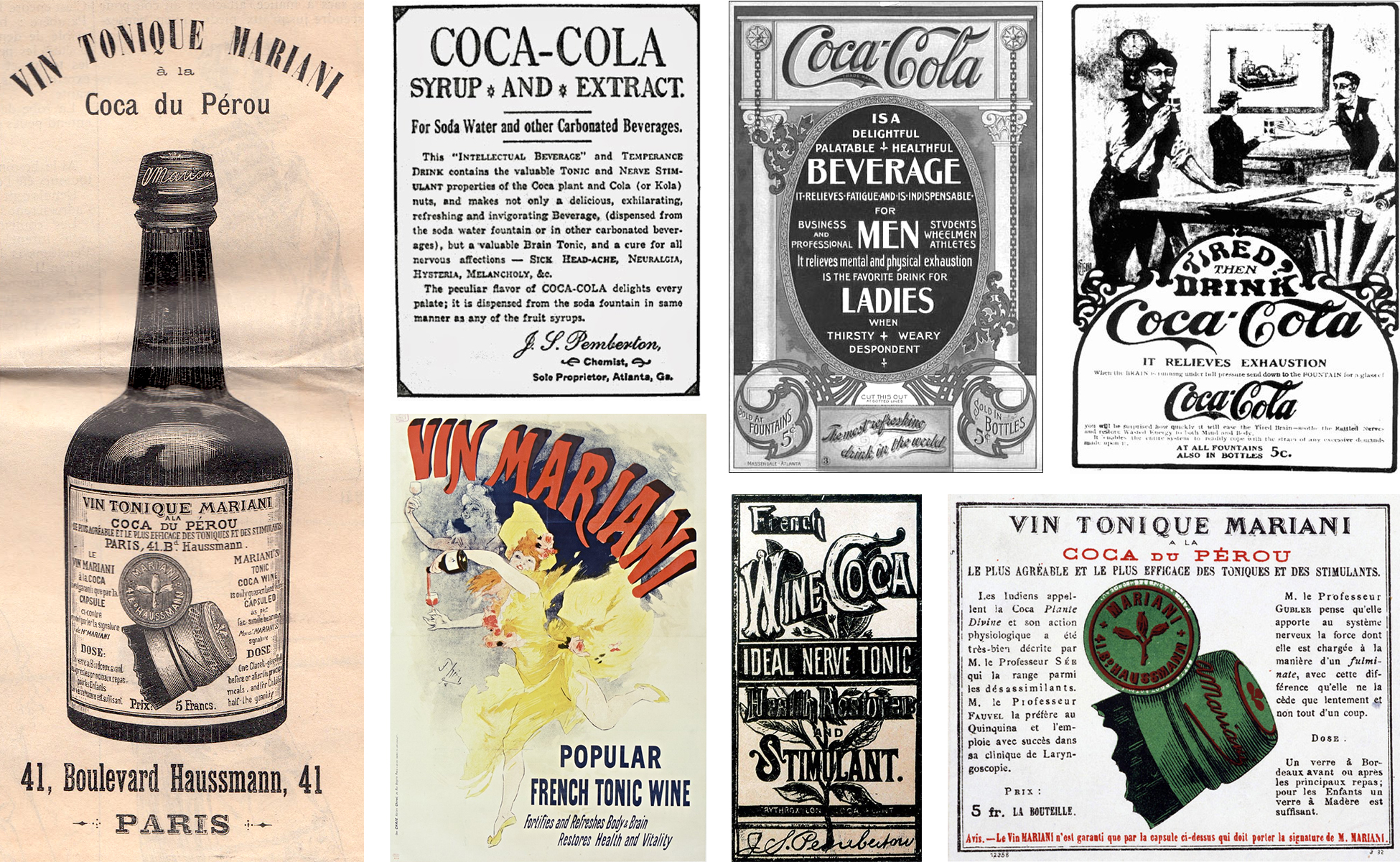 Mariani tonic wine and Coca-Cola with coca leaf, sold as medicines, or "intellectual drink"
Mariani tonic wine and Coca-Cola with coca leaf, sold as medicines, or "intellectual drink"
Milka, on the other hand, is a contraction of Milch und Kakao = milk + cocoa. Brands like these are called acronyms, which we'll discuss shortly.
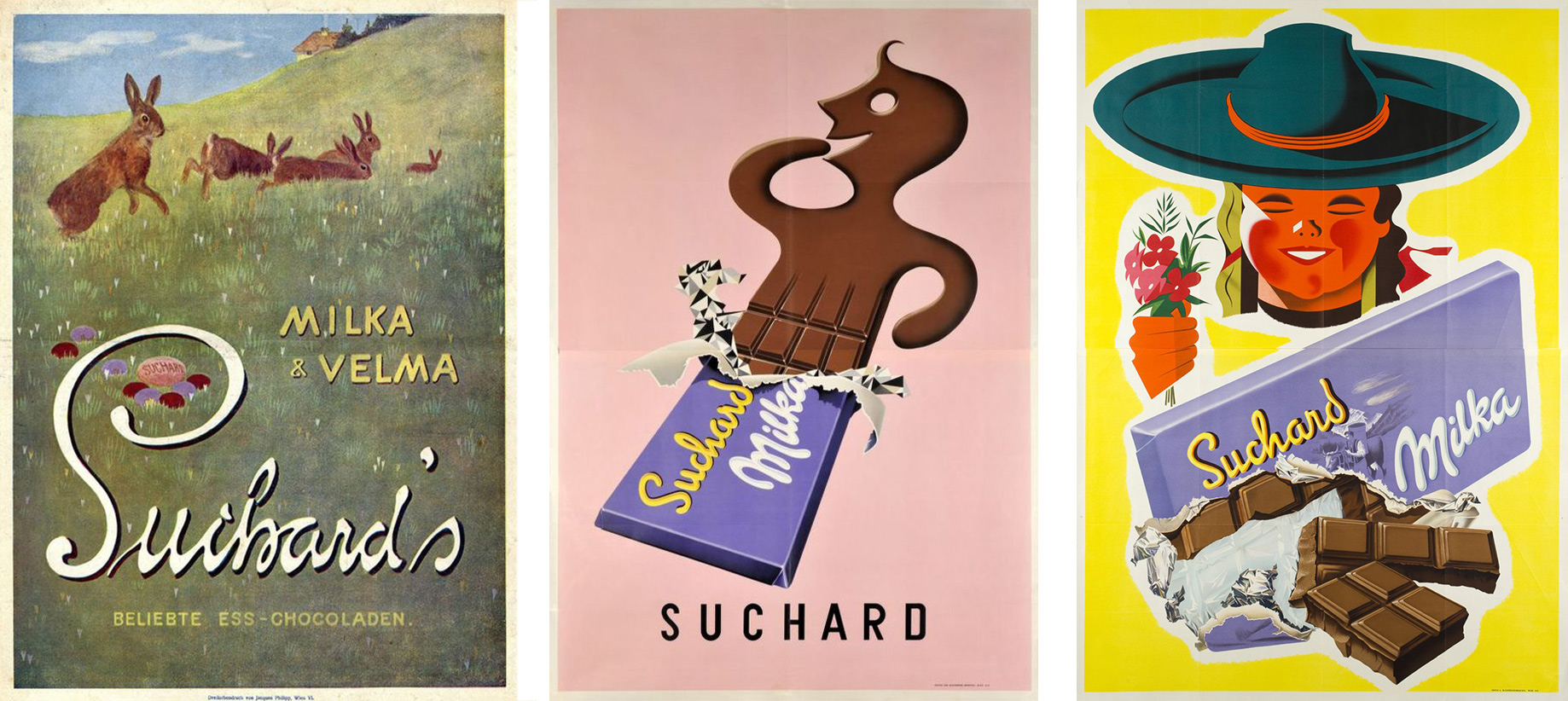 Publicités Milka vintage
Publicités Milka vintage
Other solution for creating brand or model names in the 20th century: giving them a number and appealing letters, like the 403, the R4 (4L), the 2CV, or the DS in the automotive field. "CV" is actually an abbreviation for "chevaux" (horses), and "DS" is obviously pronounced "Déesse" (goddess) orally. A good basic that allowed for not tearing one's hair out over naming.
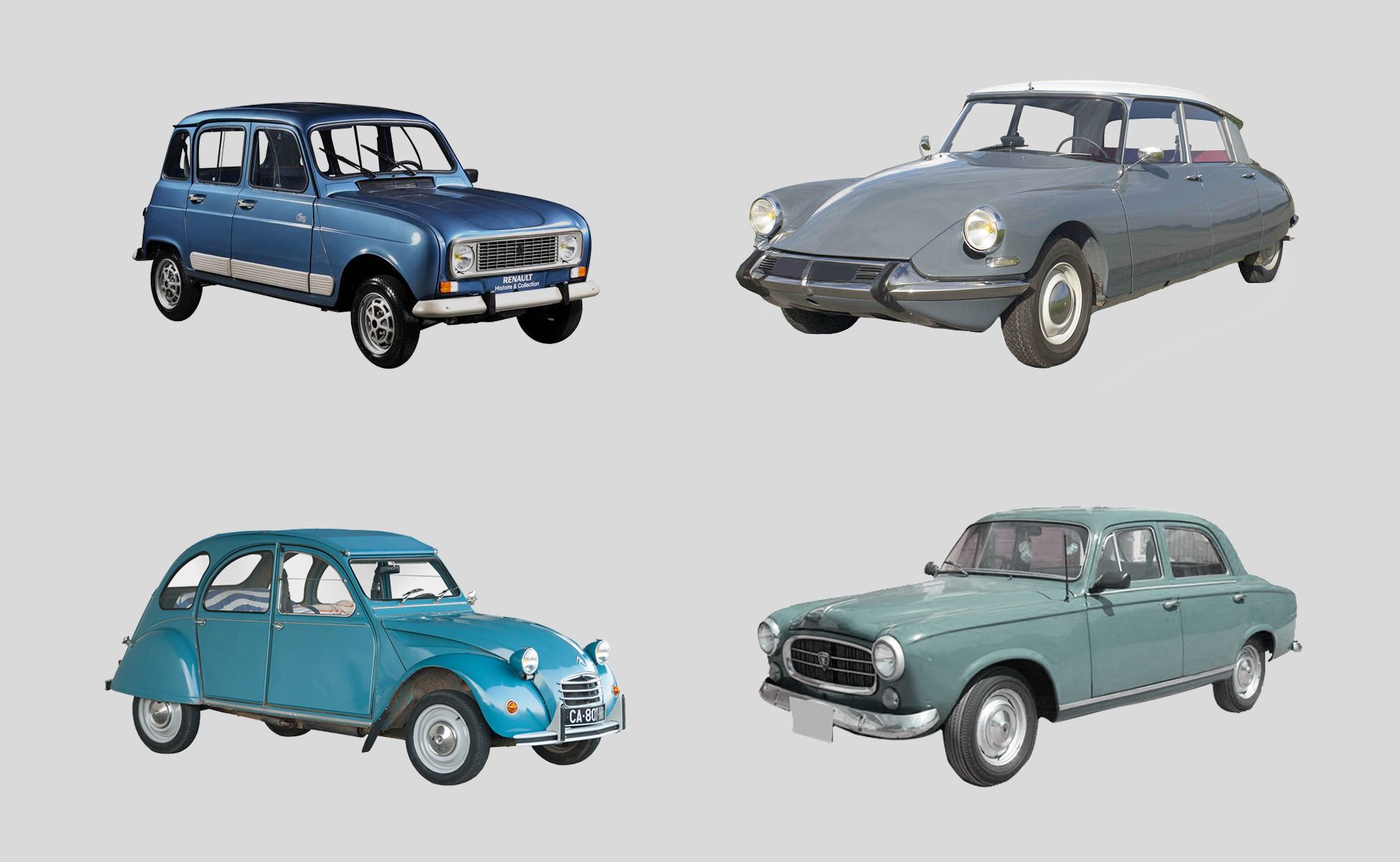 Top to bottom and left to right : 4L, DS, 2CV, 403
Top to bottom and left to right : 4L, DS, 2CV, 403
Se lancer à l'international avec des initialesLaunching internationally with initials
Gradually, in the mid-20th century, companies expanded locally or internationally, diversified, merged, or became large groups. Moulinex, with its -ex suffix, hinted at its diversification, selling more than just "moulin-légumes" (vegetable mills) from 1957 onwards.
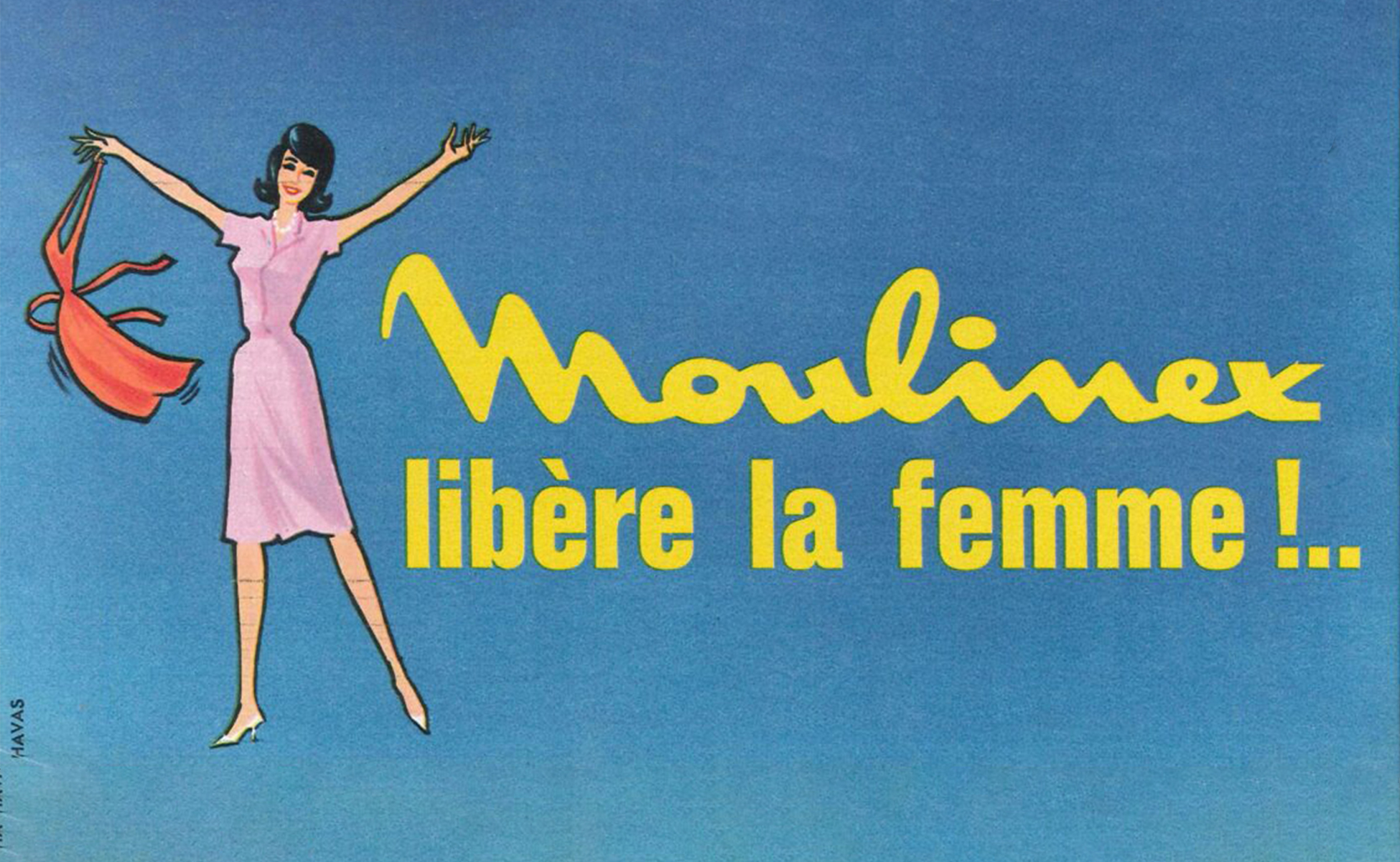
Brand names followed this market expansion and became inversely shorter. They became more easily memorable, especially when they became acronyms composed of initials or letters, as is often the case. These mostly appear as shortened forms or nicknames of well-known brands and make sense to the user's ear. With acronyms, names disappear to make way for letters (as with Hennes & Mauritz, which becomes H&M), simplifying long or difficult-to-pronounce names. The abstraction of the once-familiar name facilitates its internationalization.
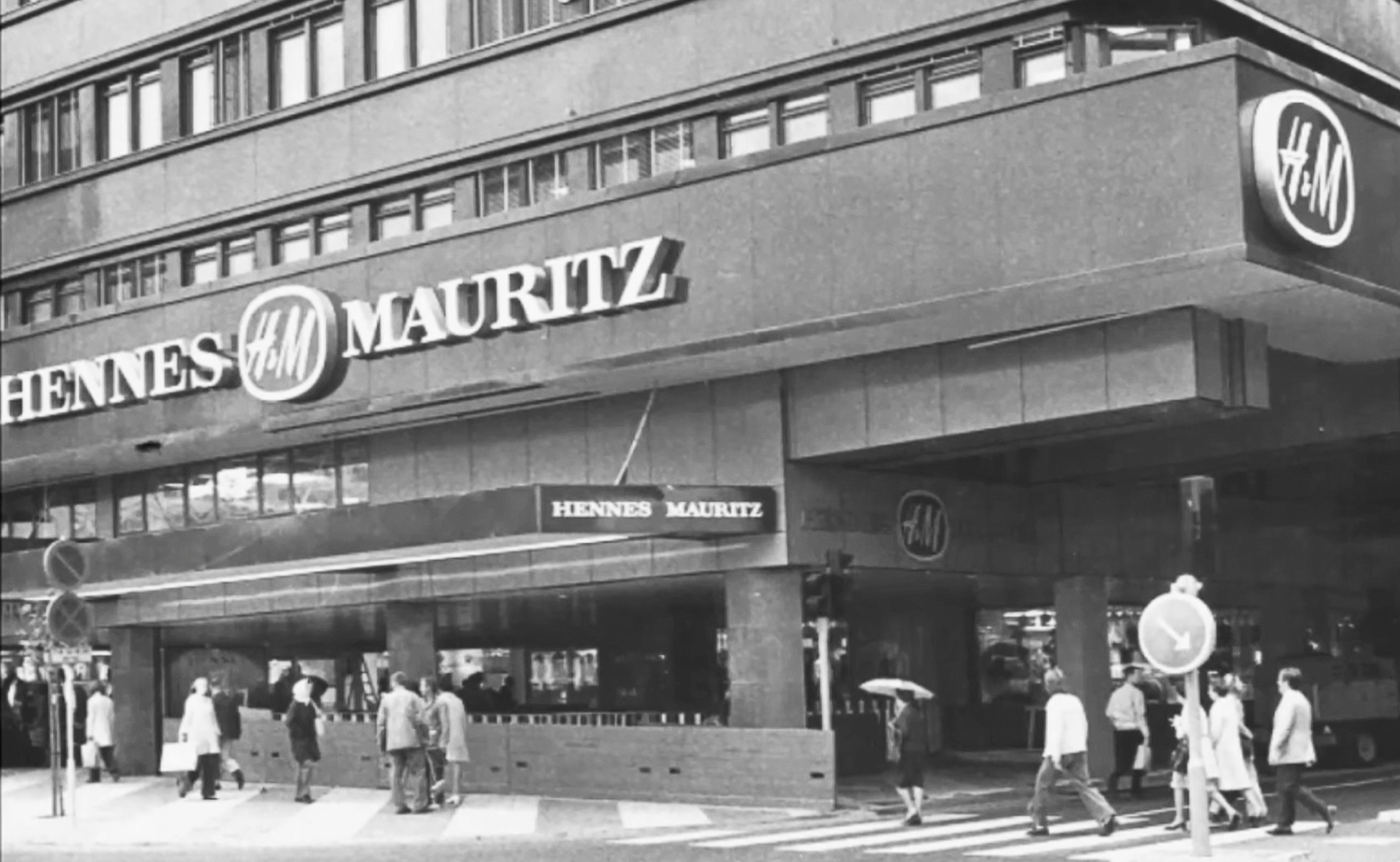 H&M store in the 1970s
H&M store in the 1970s
The Romans, precursors of acronyms
Although this phenomenon of acronyms—groups of abbreviated words composed of the sequence of their initials—gained traction in the 20th century, it is not new, as history is marked by two acronyms almost as well known as the Nike logo: S.P.Q.R., Senatus populusque romanus (The Senate and the Roman people) and INRI, Iesus Nazarenus Rex Iudaeorum (Jesus the Nazarene, King of the Jews). Although they are not brands, their function is similar; these initials were used as a "logo" to save space on narrow media, such as the cross, or, in the case of S.P.Q.R., because engraving 4 letters instead of 24 saves time, and they were easier to remember for people who didn't speak Latin... In any case, for brands or notable inscriptions, acronyms are practical to write and easy to remember.
Acronyms or initialisms? It all depends on pronunciation
For enthusiasts of acronyms and definitions, there are variations in these two examples based on initials:
one can either spell out the letters of the acronym in sequence, S.P.Q.R., or pronounce the word INRI syllabically, like a name, in which case it's called an acronym. It's also an acronym, but one that is pronounced differently. We'll come back to this later. Unlike words, acronyms do not convey any particular meaning... except perhaps
L.H.O.O.Q. by Duchamp...
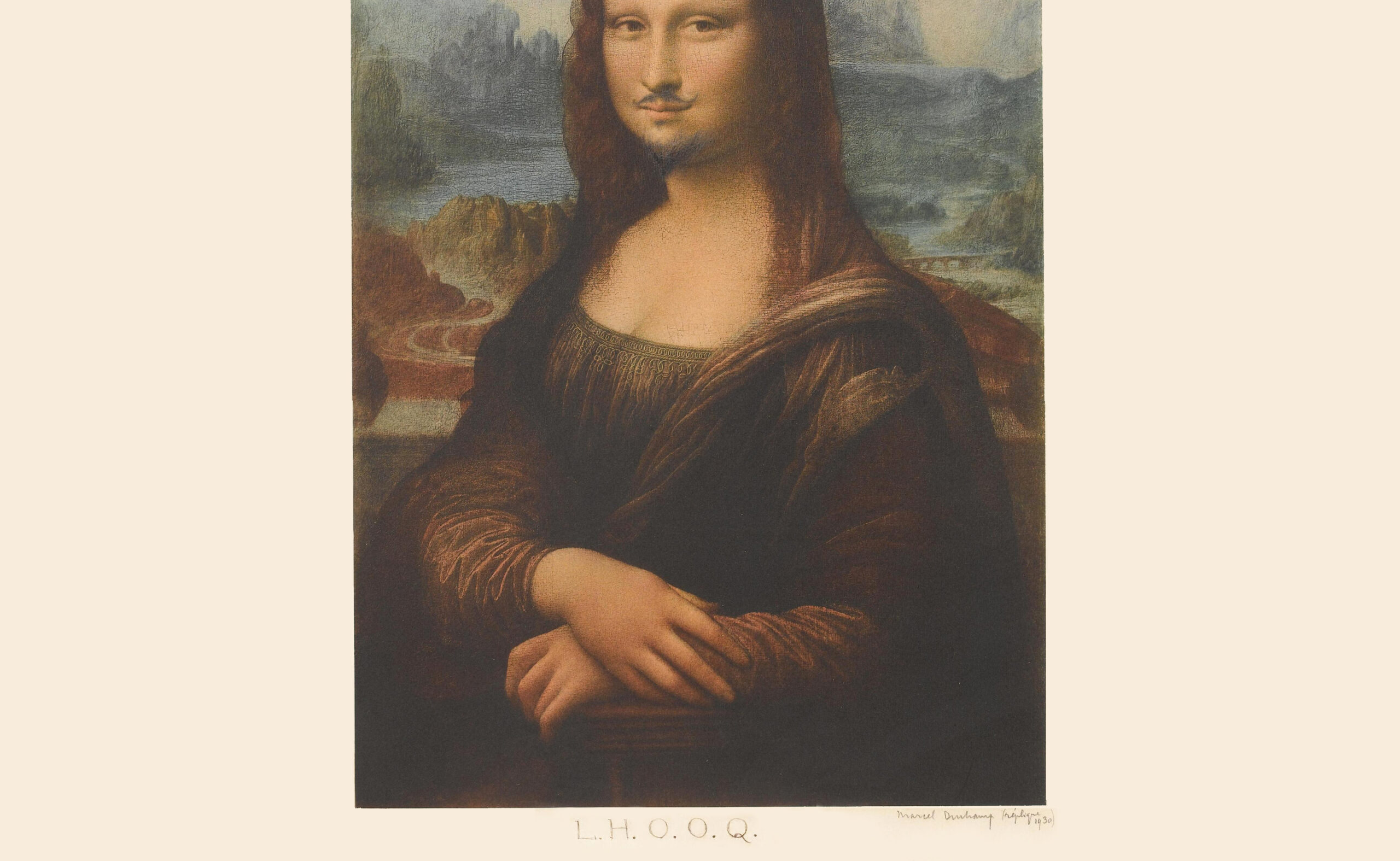
Let's get back to our brands. Yves Saint-Laurent created the acronym YSL for his first ready-to-wear line, and the company Bayerische Motoren Werke (B.M.W.) was established in Munich in 1916 after the merger of Bayerische Flugzeugwerke and Rapp Motorenwerke... we thank them for the abbreviation. Public services, on the other hand, prefer acronyms, such as the Compagnie du chemin de fer métropolitain de Paris (C.M.P., 1899) and the Société des transports en commun de la région parisienne (S.T.C.R.P., 1921), which merged after World War II to create the R.A.T.P. (1948, Régie Autonome des Transports Parisiens). The Confédération Générale du Travail (1895) becomes the C.G.T. in 1902.
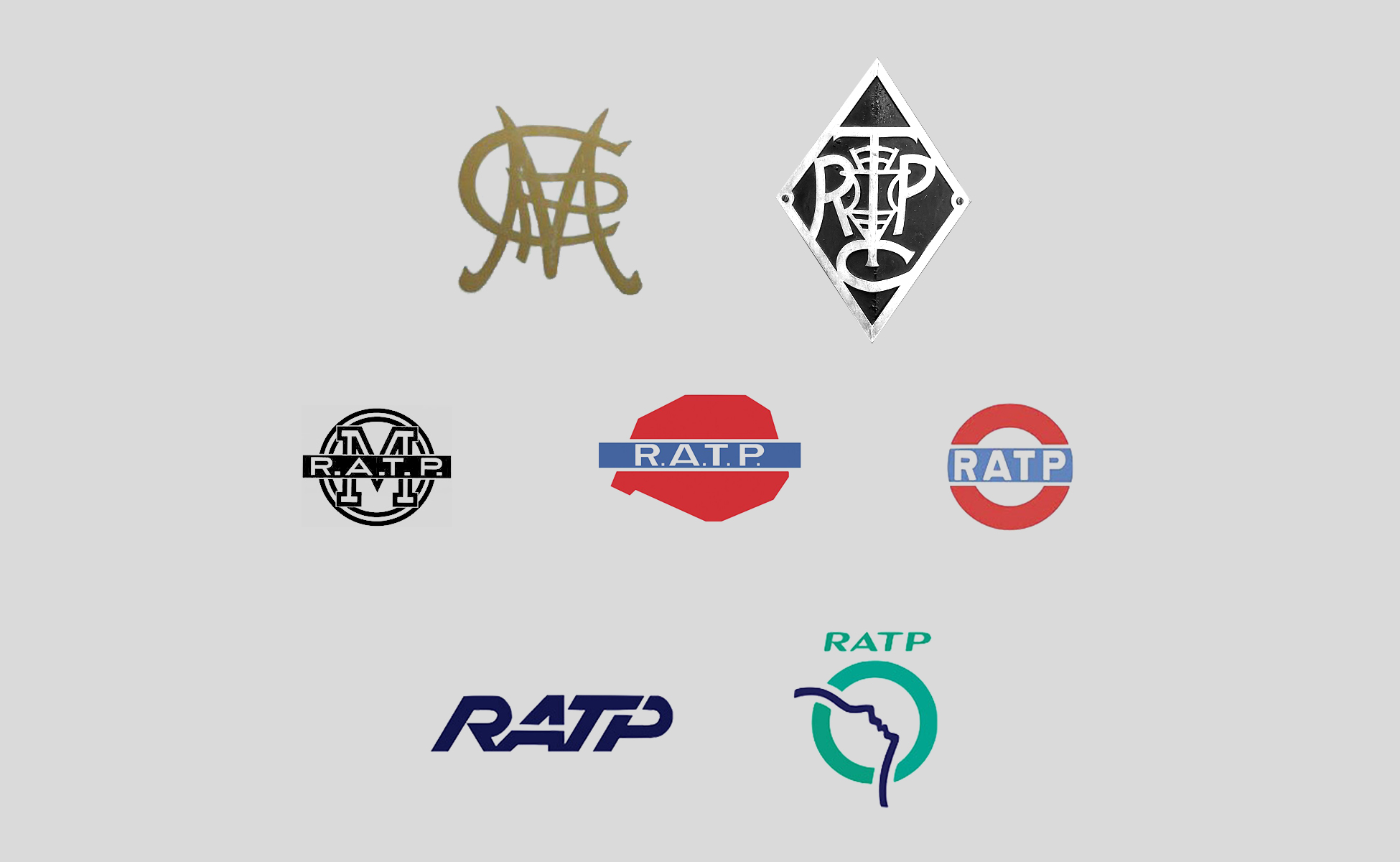 The evolution of the Paris transport logo, from C.M.P. to R.A.T.P.
The evolution of the Paris transport logo, from C.M.P. to R.A.T.P.
To facilitate the memorization of these brands, acronyms are sometimes used. Consisting of initials or a set of letters taken from a group of words in sequence, like Milka or Inri mentioned earlier, acronyms are not just spelled-out letters: they reflect a desire to form a word that can be read and has a pleasant sound, like Haribo (1920, the brand creator's name and his hometown: Hans Riegel, Bonn). When lexicalized (i.e., they become proper nouns), acronyms can also be written in lowercase. Adidas (1949) is the acronym of the founder's last name, Adolf (nicknamed Adi) Dassler. He wanted to distinguish himself from his brother and competitor Rudolf, who had considered Ruma, derived from Rudolf, before preferring Puma (1948), a common name pronounceable in several languages, and with a logo already established. Nissan is the acronym for Nippon Sangyo, and Fiat for Fabbrica Italiana Automobili Torino. One also thinks of IKEA, which wouldn't have appealed to anyone by keeping Ingvar Kamprad, Elmtaryd, Agunnaryd (the brand creator's name and hometown) or by preferring EAIK, in a different order. Hence the interest in sound.
Are brand names in acronyms or initialisms a good idea?
While practical, acronyms are not the most effective way to create a brand, especially starting with zero notoriety, as they are very abstract. They can hinder pronunciation and therefore memorization of the brand when there are too many letters. It also happens that the letters change order from one language to another, which can lead to misunderstandings: the ONU, Organisme des Nations Unies, is UN in English, United Nations... A brand signature is often essential to describe it and make it identifiable, especially since the same letters can sometimes define several different companies. A distinctive visual identity will distinguish two entities with the same name.
Acronyms, which are more easily pronounced, will be easier to remember. Think, for example, of Nasa (National Aeronautics and Space Administration, founded in 1958, which was initially called NACA!), Pepsi (short for dyspepsia, a digestive disorder), or Sopalin (Société du Papier-Linge, 1948).
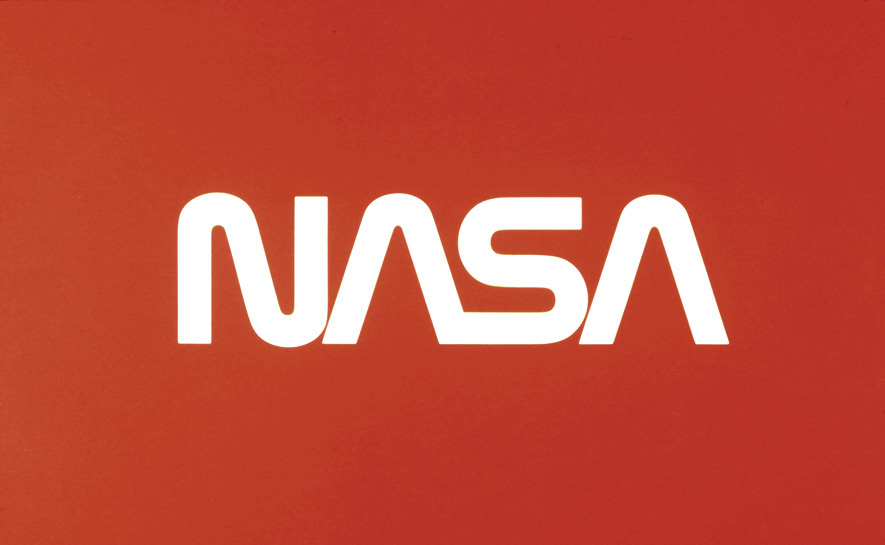
Over time, however, some brands in acronyms have made people forget their original meaning, but, despite being perfectly abstract in themselves, they are now recognized as strong identities. Who needs to remember the names of the founders of H&M, or know the meaning of PMU (Pari mutuel urbain), NASA, RATP, HSBC (Hong Kong & Shanghai Banking Corporation), or SFR (Société Française du Radiotéléphone) to remember these brands? Even though they mean nothing and could label just about anything, they have been around long enough not to need introduction. They have made a name for themselves from letters.
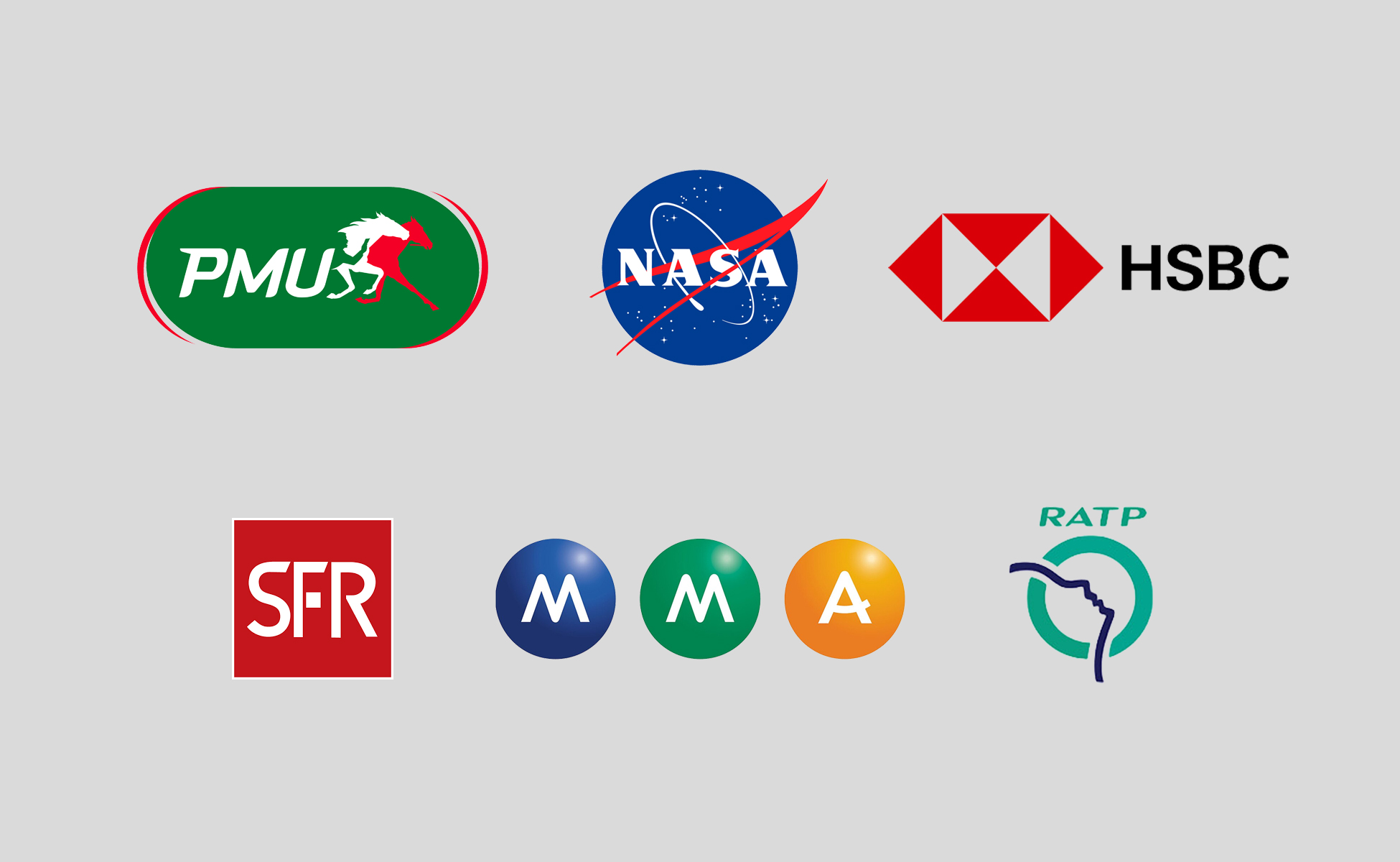
Conversely, after a scandal it is not uncommon for companies to adopt acronyms, precisely to erase the familiarity of their name associated with a bad image. Some create new identities, like the Compagnie Générale des Eaux, which became Vivendi, and others cut their letters. This is especially true for Crédit Lyonnais, which became LCL in 2005 following a financial scandal resulting in losses of over 130 billion francs, or for Mutuelles du Mans Assurances, which became MMA in 1999 after dubious investments by former executives. This is a way to reaffirm one's status with capital letters, to create distance, and to erase all traces of familiarity. It's a bit like calling yourself Mr. instead of Coluche.
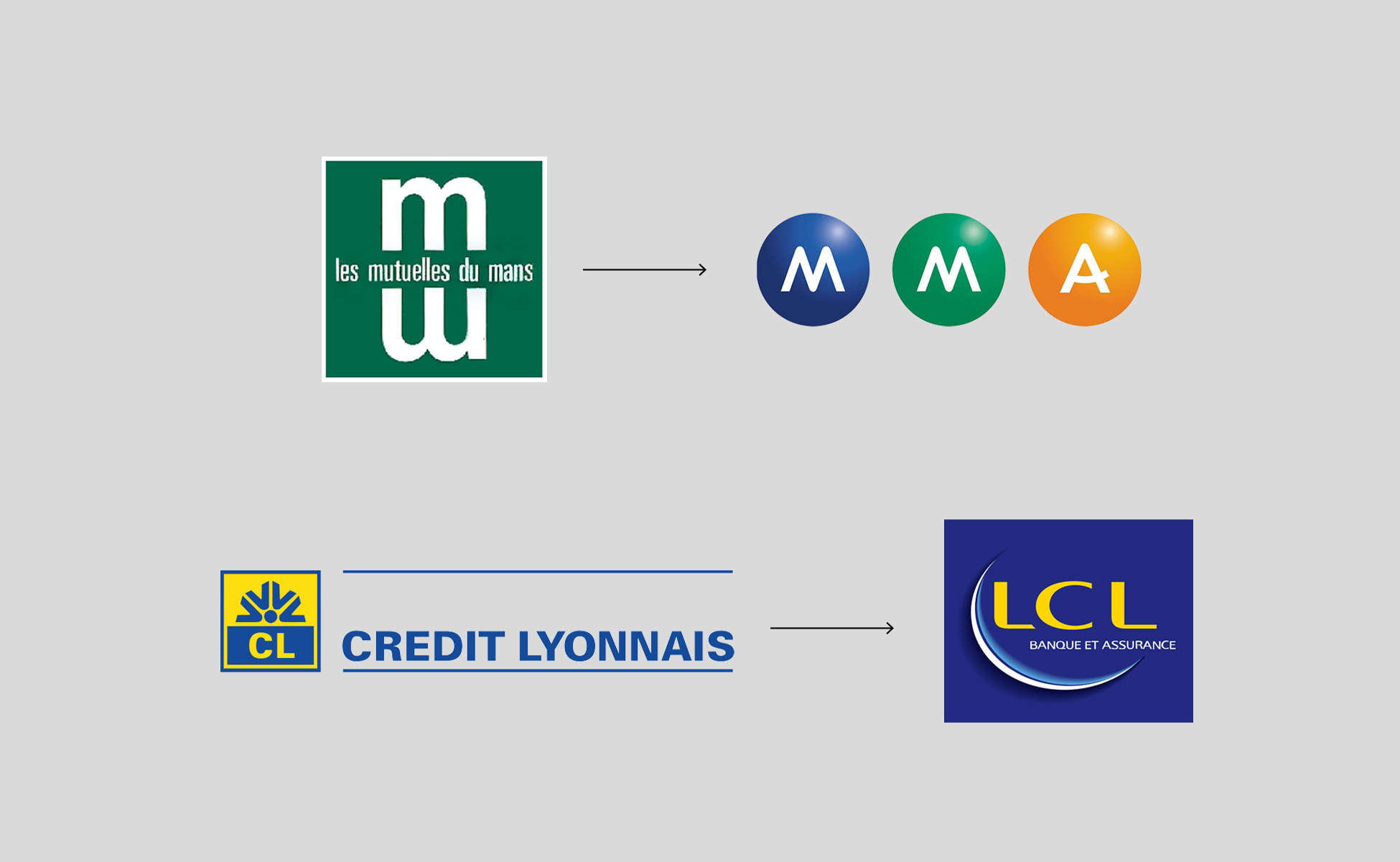
Backronyms, or how to twist acronyms
The flip side is that these same initials provide an opportunity to create backronyms, or to mock brands, especially after bad experiences. Think of "Reste Assis T'es Payé" (stay seated, you're payed) or "Rentre Avec Tes Pieds" (go home with your feet) invented following numerous strikes at the RATP, the Belgian airline Sabena transformed into "Such A Bad Experience Never Again," or the Portuguese company TAP, "Take Another Plane."
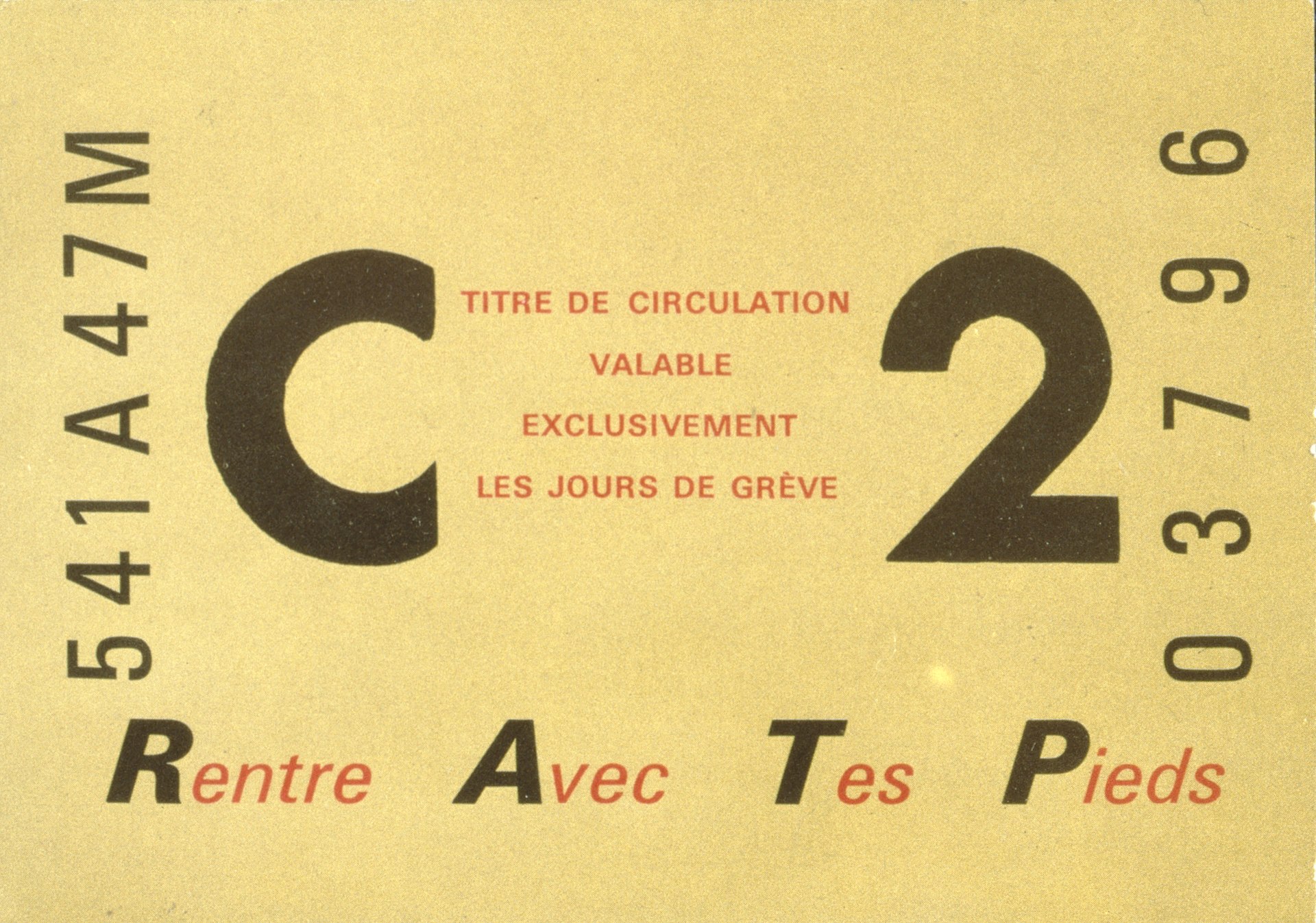
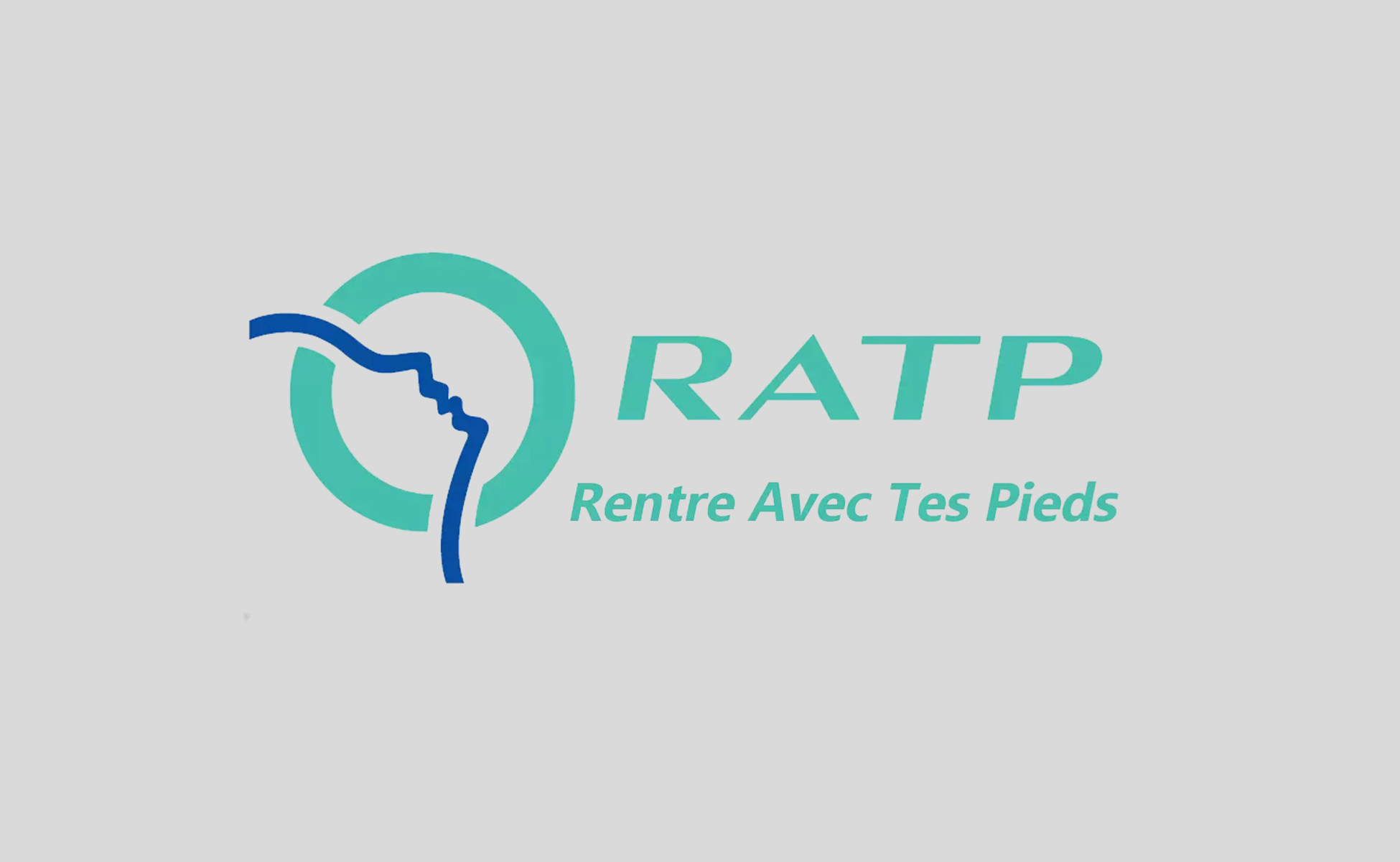
Some invent more cynical versions, like
IBM employees who turned their brand into "Idiots Built Me" or "In Business for Money." In France, to ridicule the
USSR (Union of Soviet Socialist Republics), it was changed to "l'Union Ratatinée des Saucissons Secs" (Shriveled Union of Dry Sausages) in the 1960s.
Adidas becomes "All Day I Dream About Sports" (or Sex, depending on the interpretation). Conversely,
Asics is truly the acronym for "Anima Sana In Corpore Sano" (a sound mind in a sound body), and that's what their
latest communication campaign emphasizes!
Today, and for the past fifteen years with the rise of globalization,
brands have had increasingly less abstract names, opting for more reassuring, "feminine," and familiar names ending in -ae or -ia. Either "round," evocative, or with a Latin sound, brands are now known as Veolia, Nuxe, Melvita, Vrai, Allianz, Vélov, Deliveroo, or Danao... These brand names are the next step after acronyms, breaking free from an initial definition to invent a word based on ideas that suggest an image to the customer: pure and simple
naming. But that's another story!
 André Citroën and Gabrielle Chanel
André Citroën and Gabrielle Chanel Mariani tonic wine and Coca-Cola with coca leaf, sold as medicines, or "intellectual drink"
Mariani tonic wine and Coca-Cola with coca leaf, sold as medicines, or "intellectual drink" Publicités Milka vintage
Publicités Milka vintage Top to bottom and left to right : 4L, DS, 2CV, 403
Top to bottom and left to right : 4L, DS, 2CV, 403
 H&M store in the 1970s
H&M store in the 1970s
 The evolution of the Paris transport logo, from C.M.P. to R.A.T.P.
The evolution of the Paris transport logo, from C.M.P. to R.A.T.P.







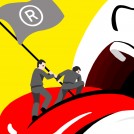
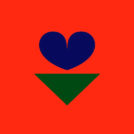
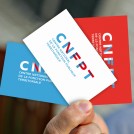
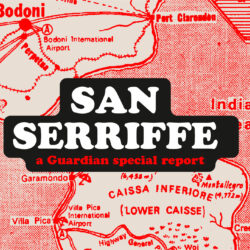 San Serriffe typographic Island
San Serriffe typographic Island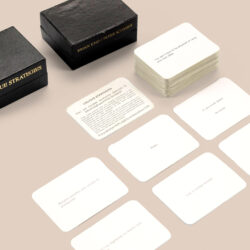 Design, creativity and oblique strategies!
Design, creativity and oblique strategies!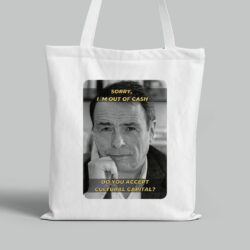 Tote bag, a new social totem?
Tote bag, a new social totem?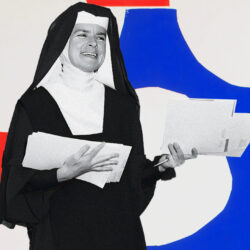 Sister Corita Kent, the Pop Art nun
Sister Corita Kent, the Pop Art nun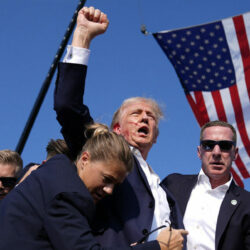 Donald Trump, the martyr who makes history
Donald Trump, the martyr who makes history VitrineMedia – Visual identity
VitrineMedia – Visual identity Intiqal – Visual identity
Intiqal – Visual identity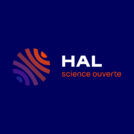 Hal & CCSD – Brand architecture
Hal & CCSD – Brand architecture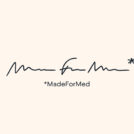 MadeForMed – Brand design
MadeForMed – Brand design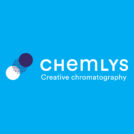 Chemlys – Brand identity
Chemlys – Brand identity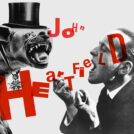 John Heartfield, photomontage as a political weapon
John Heartfield, photomontage as a political weapon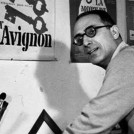 Jacno, “Five capital letters!”
Jacno, “Five capital letters!”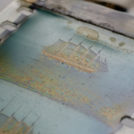 The colour photography rush
The colour photography rush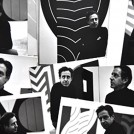 Rolf Rappaz, “The art of Swiss design!”
Rolf Rappaz, “The art of Swiss design!”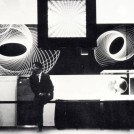 Josef Müller-Brockmann “swiss style”
Josef Müller-Brockmann “swiss style”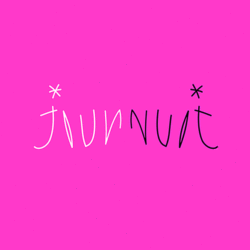

Leave a Reply